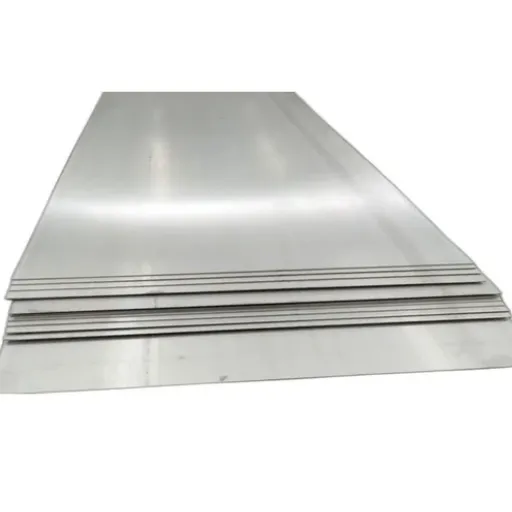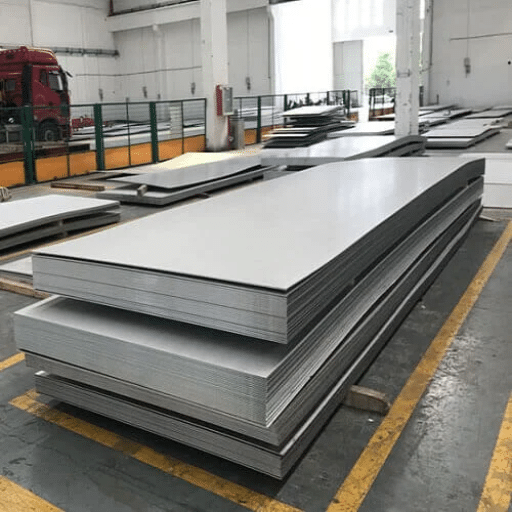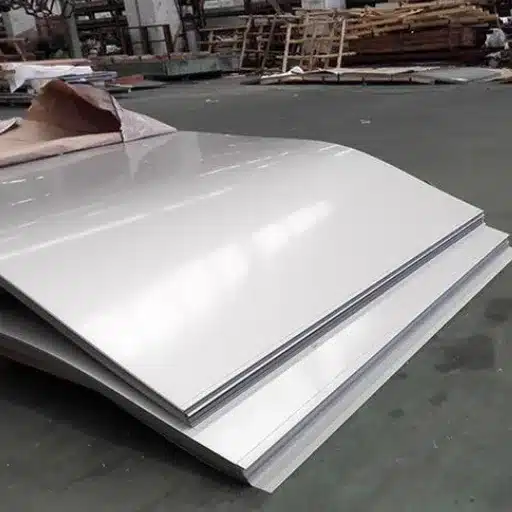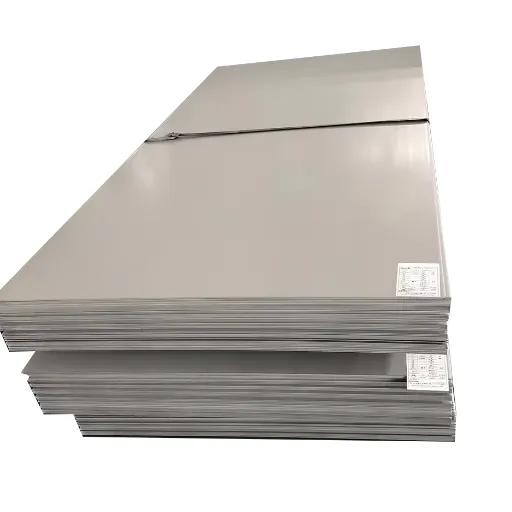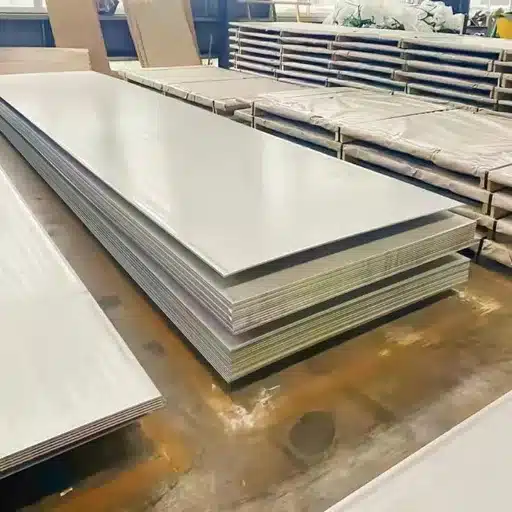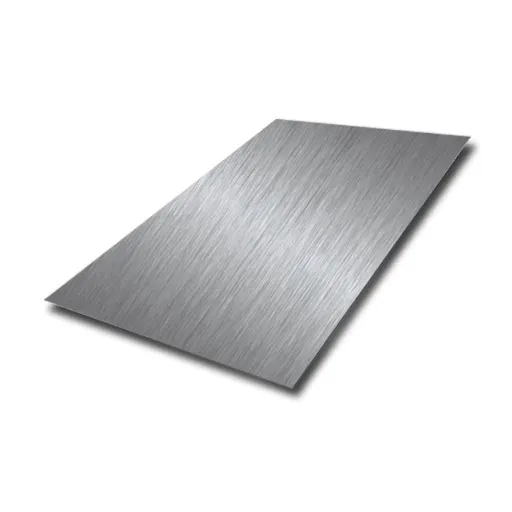The application of stainless steel reinforcing bar – or simply rebar – is changing the game in modern concrete reinforcement in construction. It resolves numerous issues presented by traditional techniques of reinforcement, particularly in extreme conditions, because of its unparalleled durability, long-term performance, and corrosion resistance. In this guide, we will walk you through everything you need to have mastered about stainless steel rebar from its material properties and engineering benefits to its cross-industry applications. Whether you are a construction professional trying to maximize the service life of structures or an engineer focused on sustainable and efficient designs, this article will showcase why stainless steel rebar is becoming an undisputed centerpiece in concrete reinforcement. So, let us explain the main advantages, technical features, and practical details that reinforce the position of stainless steel rebar as an integral element in today’s infrastructure projects.
What is a Stainless Steel Reinforcing Bar?
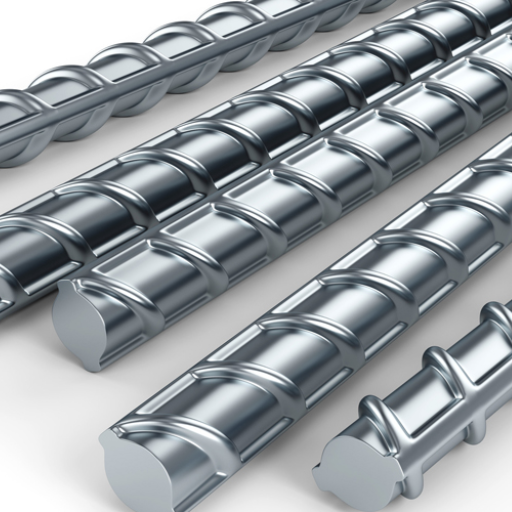
A stainless steel reinforcing bar is exactly what its name states–stainless steel rebar. This is one of the materials with the highest capabilities of reinforcing concrete structures. it is composed of iron, chromium, and other tertiary components in the form of alloys designed to improve its durability and resistance to corrosion. Carbon steel rebar does not get corroded and deteriorated due to the presence of water, chlorides, and other oxidative substances. Due to this property, it can be employed in extreme conditions, be it for bridges, marine structures, or tunnels.
Definition and Purpose of Steel Rebar
Steel rebar, or reinforcing bar, is a crucial construction material used to enhance the tensile strength of concrete, which is inherently weak in tension. Concrete alone can crack or fail under tensile stresses, particularly in structures subject to heavy loads or dynamic forces like bridges, buildings, and foundations. Rebar offers the necessary support by absorbing and evenly distributing these stresses, enabling concrete structures to maintain integrity over time. Modern advancements in rebar technology, such as epoxy coatings and stainless steel varieties, further extend its utility by improving corrosion resistance and ensuring long-term performance, even in aggressively corrosive environments.
Difference Between Stainless Steel and Carbon Steel Rebar
|
Key Point |
Stainless Steel Rebar |
Carbon Steel Rebar |
|---|---|---|
|
Corrosion Resistance |
Excellent, highly resistant to rust |
Poor, prone to rust in moist environments |
|
Material Cost |
High, due to chromium and nickel content |
Low, widely available and economical |
|
Durability |
Longer lifespan in harsh conditions |
Lower durability, especially in corrosive settings |
|
Maintenance Requirement |
Minimal due to high resistance |
High, requiring treatments or coatings |
|
Strength |
Similar strength to carbon steel |
High strength for general use |
|
Weight |
Slightly heavier than carbon steel |
Lighter compared to stainless steel |
|
Environmental Impact |
Recyclable; lower long-term environmental impact |
Recyclable but higher emissions during corrosion |
|
Thermal Expansion |
Similar to concrete, reduces cracking risk |
Similar to stainless steel, compatible with concrete |
|
Suitability for Marine Use |
Ideal for marine and chloride-rich environments |
Poor suitability; corrodes in marine settings |
|
Common Applications |
Bridges, structures in corrosive zones |
General-purpose construction |
Common Grades of Stainless Steel Rebar
Stainless steel rebar is divided into several grades based on its intended use. The following are the most commonly used grades:
- AISI 304 (EN 1.4301): AISI 304, also known as EN 1.431, supports and builds the austenitic stainless steel schema due to its properties such as corrosion resistance and durability. Areas where water or moisture are present have a limited exposure to chlorides. Areas of extreme chlorides are unsafe, and and so is too much of chromium or nickel alloys. However, moderate quantities do leave it suitable for general reinforced concrete applications ensuring a long life.
- AISI 316 (EN 1.4401): This Grade Is Specialized For Corrosion Resistance Having Exposed Molybdenum Which Cleary Enhances Its Pitting And Crevice Corrosion Resistance. It sews applications around marine structures, coastal areas, infrastructures prone to de-icing salts and provides long term resilience agenerative conditions.
- AISI 2205 (EN 1.4462): A Duplex Stainless Steel. This Grade Provides A Balance Between High Strength And Excellent Corrosion Resistance. Its Austenite and Ferrite Dual-phase Microstructure increases its mechanical properties and resistance to chloride stress corrosion cracking. AISI 2205 is a preferable for extreme harsh environment adaptable load bearing structures.
- AISI 2304 (EN 1.4362): Similar to other duplex stainless steel types, AISI 2304 possesses remarkable corrosion resistance and is cheaper than more expensive alloys, for example AISI 2205. AISI 2304 is frequently used in reinforced concrete structures that have to bear moderate amounts of chlorides and require considerable strength.
- AISI 316Ti (EN 1.4571): This grade is more common in high-temperature usage or any application that has the need of high thermal stability. The rest of properties are similar to AISI 316. Its difference is a Titanium addition which increases its intergranular corrosion resistance at high temperatures.
Why Choose Stainless Steel Rebar for Concrete Structures?
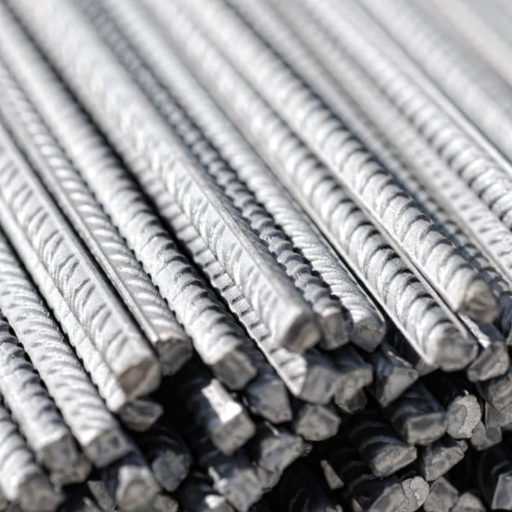
Construction structures incorporate stainless steel rebar due to its ability to enhance durability and ward off corrosion when compared to others, especially when used in industrial and coastal settings. Enhanced structural durability and reduced maintenance expenses due to stainless steel rebar allows critical resources to be conserved. Unlike other alternatives, stainless steel does not compromise on flexibility and can easily manage different loads, thus proving to be low-cost and eco-friendly.
Corrosion Resistance and Durability
With the use of stainless rebar, important issues such as corrosion become obsolete due to its ability to outperform traditional carbon steel and other alternatives in aggressive settings. Areas subjected to de-icing or marine salts are known for rapid corrosion with conventional materials, but stainless steel’s resistance towards chloride-inflicted corrosion makes it a perfect fit. Other researches prove that Stainless Steel Rebars can lengthen the usage of structures for 75+ years which results in a decrease of expensive maintenance and replacement.
Durability of the material goes beyond corrosion resistance as it also performs well under cyclic loading and extreme temperatures. Further alloying with elements like chromium, molybdenum, and nickel which strengthen the passive oxide layer of the material preventing oxidation further ensures structural stability. With all these combined properties of corrosion resistance, chromium enriched stainless steel can be used for construction of bridges, tunnels, marine infrastructure and other industrial facilities which require high durability and maintenance free lifespan.
Comparison of Initial Costs vs. Long-Term Benefits
The long-lasting advantages that come with using stainless steel rebar counterbalance its higher upfront cost. This depends on the long-term investment strategy which revolves around maintenance, repair, and replacement expenses. These expenses stand to benefit greatly through the use of stainless steel rebar. Due to extensive manufacturing processes as well as the inclusion of chromium and nickel, stainless steel rebar does carry a steep price compared to traditional carbon rebar. Regardless of the initial expenses, the long-term requires less maintenance because of the cost reductions arising from the replacement repairs.
Studies have shown that stainless steel rebar can increase the service life of concrete structures by as much as several decades in highly corrosive marine or industrial environments. These costs are now reduced over the lifecycle of the structure, making it a cheaper option in the long run. Less risk of structural failure due to corrosion also increases safety while decreasing liability costs. From the perspective of total ownership costs, stainless steel rebar provides optimal economic efficiency while supporting sustainable engineering and resilient long-term infrastructure goals.
How is Stainless Steel Rebar Manufactured?
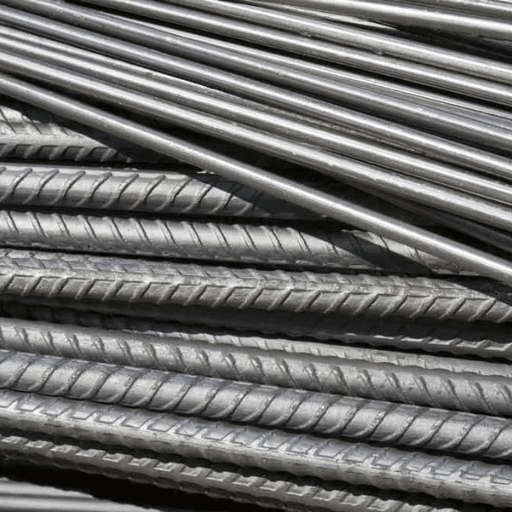
The entire procedure of making rebar stainless steel starts with the combination of raw materials like iron, chromium, nickel, and several other alloying elements, which, as a result, are melted in an electric arc furnace and, as they are being melted, are used to create the desired mixture. The molten mixture is casted into either billets or slabs which later on gets reheated and rolled into the necessary shapes and sizes of the rebar. In the last steps, the rebar is subjected to straightening and cutting for it to meet the industry standards and specifications. During the entire process, quality control is maintained to ensure performance and consistency.
Manufacturing Processes for Stainless Steel Reinforcement
The importance of stainless steel rebar offers includes combating environmental stressors and corrosion which introduces cheaper long-term maintenance. Unlike carbon steel rebar, stainless steel rebar performs well in harshmarine construction environments with high exposure to chlorides. The environmental stressors become irrelevant as the structure gains longevity.
Besides, stainless steel rebars are suitable for critical applications with risks to life and property due to an increase in tensile strength and ductility. Research shows that stainless steel reinforcement can save up to 75-100 years of service life in a concrete structure, thus making it more sustainable and efficient in terms of life cycle value in infrastructure projects. Also, the decreasing cost of stainless steel rebars due to improvements in metallurgical stainless steel rebar manufacturing technologies makes it easier to adopt for use in construction regardless of scale.
Specifications and Standards for Production
The international and local standards of stainless steel reinforcement set quality benchmarks, reliability, and uniformity in processing. Referenced standards are ASTM A955/A955M which describes the requirements for the plain and deformed stainless steel bars for concrete reinforcing. Another example is ISO 6935-2 which gives the world instruction on the steel for reinforcing concrete. These standards address important issues like mechanical features, chemical makeup, resistance to corrosion, and structural tolerances.
As an example, grade standard enhancements like yield strength of 75 ksi (520 MPa) comes with ASTM A955 strength requirements where 10.5% chromium is paid towards less corrosion claim. The attention also applies to finish and deviations from the designed contours as they are believed to determine the bond strength with concrete. Other certifications like compliance with Eurocode 2 in Europe ensure that the additional structure is safe and stable, considering local weather conditions and environment.
In addition to meeting requirements, modern practices also include sophisticated testing procedures like accelerated corrosion testing, tensile testing, and microstructural examination. These measures ensure that defined specifications are met and also assist manufacturers in enhancing the performance of their reinforcement bars to withstand harsh environments, especially aggressive marine or industrial ones. Such complete compliance strengthens the position of stainless steel as a key construction material in the eco-friendly sustainable infrastructure development to support resilient construction.
What are the Applications of Stainless Steel Reinforcing Bars?
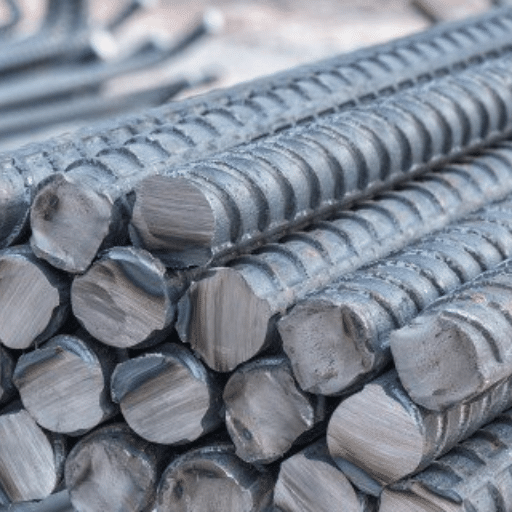
Applications requiring long-lasting effectiveness, resistance to corrosion, and structural integrity often make use of stainless steel reinforcing bars. Some incisions are:
- Marine structures. Employed in piers, docks, and seawalls to counter saltwater corrosion.
- Bridges Used in bridge decks and supports which face de-icing salts and cold weather.
- Tunnels Reinforcement of tunnel linings in highly moist environments or areas rife with chemicals.
- Industrial Infrastructure. Chemical and wastewater treatment plants exposed to aggressive chemicals.
- Architectural Projects. Used in building facades and cutting-edge design elements to strengthen as well as beautify structures.
- Urban environments. Sidewalks and parking garages are subject to high concentrations of de-icing salts and pollutants.
These applications show the versatility and dependability of stainless steel reinforcing bars in more complex and different applications.
Applications in Bridges and Roads
Stainless steel reinforcing bar as we know is highly useful in constructing bridges and roads. Also, these reinforcing bars serve the purpose in areas where corrosion resistance is a must. Here is the detailed overview for using stainless steel reinforcements in infrastructure projects
- Corrosion Resistance in Coastal Bridges: Stainless steel rebars are employed in bridges containing seawater or adjacent to them where chloride-induced corrosion is a prime problem. It is proven through studies these stainless steels can survive harsh environments such as these for upto 75 years without losing durability at the time of maintenance.
- Deicing Salt-Exposed Roadways: It is well known that overpasses and highways treated with deicing salt pose a significant risk of corrosion for traditional steel reinforcements. Deterioration is sure to happen if proper measures are not used. By enforcing control and using stainless rebars, enduring deterioration is possible, which aids in performing better over an extended period.
- Load-Bearing Capacity in Heavy Traffic Areas: High traffic roads and bridges face the challenge of dealing with heavy vehicles. This is where the tensile and yield strength of stainless steel comes in handy. Using Amongst others, Type 2205 duplex stainless steel is known for providing durablility greatly exceeding carbon steel.
- Seismic Zones: The construction of bridges and elevated roadways in seismic regions utilizes stainless steel rebar due to their ductility and energy absorption capabilities. These qualities improve the design’s overall resilience.
These applications showcase why rebar made of stainless steel is preferred because they promote long-life and low-maintenance infrastructure resilient to negative environmental impacts for critical construction projects like bridges and roads. These rebars are favored materials because of the stainless steel’s ability to endure harsh conditions without losing structural performance.
Rebar Applications in Residential and Commercial Projects
Rebar enhances the structural integrity and durability of both residential and commercial buildings. It is mostly utilized wherever reinforced concrete is required due to ease of availability and flexibility. Below, key uses of rebar in these sectors are outlined:
- Foundation Reinforcement
Rebar is prominent for counteracting tensile stresses in foundations providing stability over time. For example, in family houses, rebar grids are placed within concrete slabs to reduce cracking risks and avoid soil movement or load pressure structural failures.
- Wall Construction
Reinforced concrete walls, both load bearing and non load bearing, require added tensile strength making rebar necessary. This is very important for commercial buildings whose walls need to surmount substantial lateral and vertical forces.
- Floor Slabs and Beams
Rebar forms are placed within floor slabs and beams to enhance resilience against bending and shear force to evenly distribute load. Commercial high-rise buildings extensively make use of post-tensioned or pre-tensioned rebars within floor systems for enhanced load bearing capacity.
- Columns and Piers
Vertical structures like columns and piers gain from the compressive and tensile strengthening provided by rebar. This allows both residential and commercial structures to support significant axial loads without buckling.
What are the Maintenance Requirements for Stainless Steel Rebar?
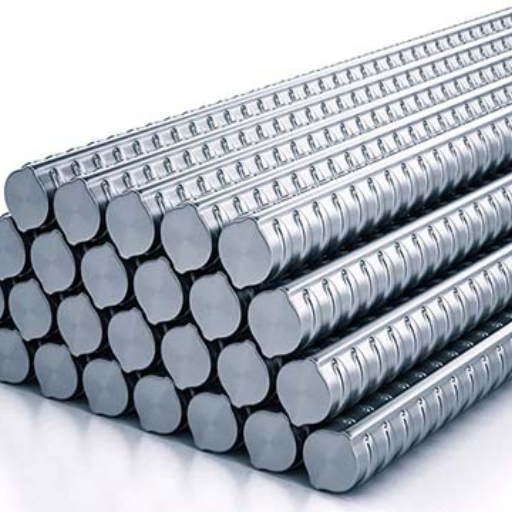
Stainless steel rebar’s corrosion resistance properties means it does not require significant maintenance. However, periodic inspections are essential to reinforce concrete with steel in structures for most regions, especially for coastal and chloride-rich environmental areas. If the steel bars are uncovered, visibility and details of the structure exposed should be debris free. Exposure to the elements is typically rare for these types of applications.
Furthermore, repairs related to surrounding concrete should be performed as quickly as possible to prevent exposure to compromised structures and embedded rebar. For minimal long-term upkeep on stainless steel rebar, adherence on proper installation during maintenance for the steel, placement, and design requirements need to be accurately followed.
Importance of Regular Inspections
In reinforced concrete frameworks, routine inspections serve as the cornerstone in maintaining and enhancing reliability, especially in environments where concrete corrosion is prevalent, and structures are greatly exposed to the surroundings. Inspections enable early problem detection such as cracks, leaks, or corrosion of the rebar which, if uncontrolled, will lead to performance failure. Visual inspections in conjunction with non-destructive evaluation methods like Ground Penetrating Radar (GPR) or Ultrasonic Pulse Velocity (UPV) should be used to get the accurate condition of the structure for active reinforcements.
Also, regular monitoring of chloride ions in concrete can indicate the chances of corrosion, especially in coastal regions or areas prone to de-icing salts. Inspections must be conducted in adherence to the life span of the structure, its design life, and exposure class, with extra focus given to aggressive environments. Following this strategy helps ensure that repairs can be done before the structure starts deteriorating, enabling cost savings and prolonging the life of the structure.
Best Practices for Maintenance in Various Environments
- Coastal Environments
Due to air and mist laden with salt, structures in coastal regions are prone to chloride-induced corrosion. Spraying the surfaces with fresh water can help reduce the accumulation of salt. Furthermore, applying corrosion-resistant coatings and adequately protective cathodic systems, if any, are additional critical approaches. Early inspections should also look for spalling and rust on reinforced concrete, as these are primary indicators of chloride penetration.
- Cold Climates (Freeze-Thaw Cycles)
In frost-prone zones, special attention should be paid to water infiltration, as repeated freezing poses a risk to structural integrity. Closing off access to seams and “watering holes” along with joints, as well as cracks, is essential. Concrete surfaces should also be protected from long-term damage through the use of de-icing agents to minimize chemical long-term effects.
- Hot and Dry Climates
The structure could also be affected by heat and direct sunlight. For example, certain polymers and asphalt can be degraded over time. To prevent this, UV resistant coatings are advisable. Also, reinforced structures can be prone to excessive drying and shrinking; therefore, moisture monitoring systems can help in averting shrinkage cracking in concrete elements.
- High-Humidity Conditions
Buildings located in regions with high levels of humidity are likely to experience mold, swelling of materials, and fast-tracked rust. Using a dehumidifier or adding proper ventilation solves these air quality issues. Special anti-fungal sprays and durable water-repellent paints should be used to strengthen surfaces.
Reference Sources
-
Corrosion Effect of Stray Currents and Techniques for Evaluating Corrosion of Rebars in Concrete: This study explored the impact of stray currents on the corrosion of steel reinforcement in concrete. It highlighted the susceptibility of steel fibers to stray-current-induced corrosion and evaluated various corrosion monitoring methods, including linear polarization resistance (LPR).
-
Corrosion Initiation Period for Stainless Steel Reinforcement in Concrete Structures: The study determined critical chloride thresholds for two stainless steel grades (UNS S40977 and UNS S32001) and carbon steel. It found that stainless steel significantly extends the corrosion initiation period compared to carbon steel, with UNS S32001 showing over 150 years of resistance in aggressive environments.
-
Effects of Seawater on Concrete with Stainless Steel Reinforcement: This research evaluated the use of seawater as mixing water for concrete combined with stainless steel reinforcement. It concluded that stainless steel reinforcement reduces the required concrete cover thickness compared to black steel, even in harsh environments.
Frequently Asked Questions (FAQs)
Q: What is a stainless steel reinforcing bar and how does it compare to traditional rebar?
A: A stainless steel reinforcing bar, commonly known as stainless rebar, is a type of reinforcing steel that offers superior corrosion resistance compared to traditional rebar made from carbon steel. It is ideal for applications in marine environments and areas exposed to road salt, as it withstands chloride-induced corrosion, resulting in a longer service life and lower maintenance costs.
Q: What grades and sizes of stainless rebar are available from a rebar supplier?
A: A rebar supplier typically offers a range of grades and sizes for stainless rebar, including common stainless alloys like 304 and 316. These grades are selected based on the specific requirements of the project, such as the environmental conditions and the required strength of the reinforcing steel.
Q: How does the use of stainless steel reinforcement bar affect the service life of structures?
A: The use of stainless steel reinforcement bar significantly enhances the service life of structures, especially in harsh environments. Due to its superior corrosion resistance, stainless rebar reduces the risk of structural deterioration, leading to lower maintenance costs and increased durability over time.
Q: Can stainless rebar be used for fabricating retaining walls and bridge structures?
A: Yes, stainless rebar is an excellent choice for fabricating retaining walls and bridge structures. Its higher strength and corrosion resistance make it suitable for these applications, especially in areas exposed to salt-laden environments, where traditional rebar may fail sooner.
Q: What are the benefits of using stainless steel rebar over epoxy-coated or galvanized alternatives?
A: Stainless steel rebar provides superior corrosion resistance compared to epoxy-coated or galvanized alternatives, particularly in aggressive environments. Unlike coatings that can wear off over time, stainless rebar maintains its integrity and performance without requiring additional maintenance, making it a more reliable long-term solution.
Q: What is the role of a distributor in the supply of stainless rebar?
A: A distributor plays a critical role in the supply chain of stainless rebar by sourcing, stocking, and delivering rebar products to fabricators and construction companies. They ensure that the right grades and sizes of stainless steel reinforcement bars are readily available for various construction projects.
Q: How does the controlled magnetic permeability of stainless rebar affect its applications?
A: The controlled magnetic permeability of stainless rebar makes it suitable for specialized applications such as MRI rooms and other environments where magnetic interference must be minimized. This property allows the use of stainless rebar without compromising the functionality of sensitive equipment.
Q: What should be considered when selecting a rebar supplier for stainless steel reinforcement bar?
A: When selecting a rebar supplier for stainless steel reinforcement bar, consider factors such as the supplier’s reputation, the range of grades and sizes available, their ability to meet project specifications, delivery times, and pricing. Ensuring that the supplier can provide high-quality stainless alloys and has experience in the industry is crucial for successful project outcomes.

